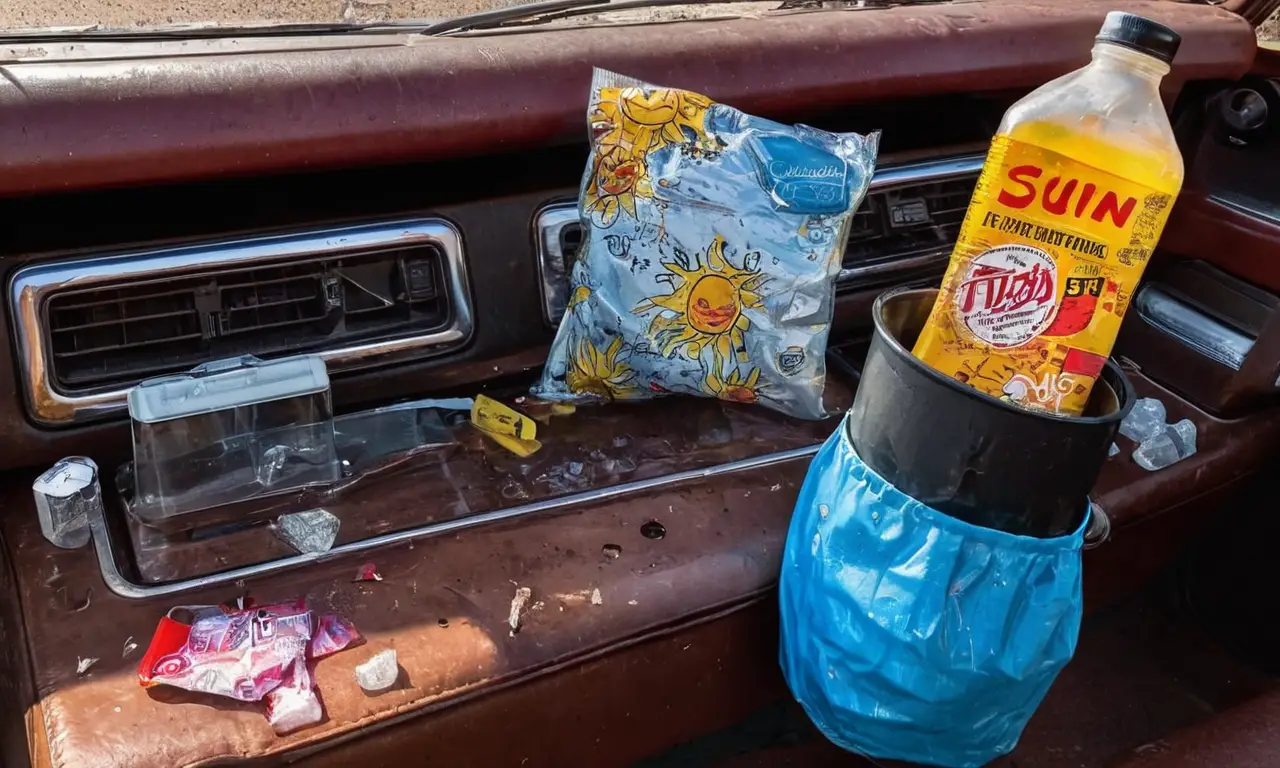
Leaving your car parked under the scorching sun can turn it into a sauna, and while you might be concerned about melting ice cream or wilting flowers, there’s another crucial item that suffers in this heat: condoms. High temperatures can significantly impact their integrity, potentially compromising their effectiveness in preventing pregnancy and sexually transmitted infections (STIs). This article will delve into the dangers of leaving condoms left in cars, explore the science behind condom degradation in heat, and provide essential tips for proper storage to ensure your safety and well-being.
This comprehensive guide will cover the detrimental effects of heat on condoms, outlining the risks associated with using damaged contraceptives. We’ll also discuss the ideal storage conditions for condoms, emphasizing the importance of keeping them cool, dry, and protected from direct sunlight. By understanding these factors, you can make informed decisions about condom storage and prioritize your sexual health.
Condom Degradation in Heat
The latex material used in most condoms is highly susceptible to damage from excessive heat. When exposed to high temperatures, the molecular structure of latex weakens, making it more brittle and prone to cracking or tearing. This degradation process accelerates significantly when condoms in hot cars are left for prolonged periods. Imagine a rubber band stretched thin – that’s essentially what happens to latex under intense heat.
The consequences of this degradation can be severe. A damaged condom is far less likely to provide a reliable barrier against sperm or bodily fluids, increasing the risk of unintended pregnancy and STIs. Even seemingly minor cracks or tears can compromise the integrity of the condom, rendering it ineffective.
It’s important to note that even moderate heat can have a detrimental effect on condoms. Leaving them in a car parked in the shade on a warm day can still lead to degradation over time. The interior temperature of a car can rise dramatically even without direct sunlight, creating an environment where condoms are vulnerable to damage.
Safety Risks of Using Damaged Condoms

Using damaged condoms poses significant risks to your sexual health. A compromised condom cannot effectively prevent the transmission of sexually transmitted infections (STIs). Bacteria, viruses, and other pathogens can easily pass through cracks or tears in the latex barrier, putting you at risk for a range of infections, including chlamydia, gonorrhea, syphilis, HIV, and herpes.
Furthermore, using damaged condoms significantly increases the likelihood of unintended pregnancy. If a condom breaks during intercourse, there is a high chance that sperm will come into contact with the egg, leading to fertilization. This can result in an unwanted pregnancy, which can have significant emotional, financial, and social consequences.
Proper Condom Storage
To ensure the effectiveness and safety of condoms, it’s crucial to store them properly. Avoid leaving can you leave condoms in a hot car? The ideal storage conditions for condoms are cool, dry, and away from direct sunlight or heat sources.
Here are some tips for proper condom storage:
- Store condoms in their original packaging. This helps protect them from moisture, dust, and other contaminants.
- Keep condoms in a cool, dark place. A bathroom cabinet or drawer is usually a suitable location. Avoid storing condoms near radiators, heating vents, or appliances that generate heat.
- Check the expiration date on the condom package regularly. Condoms have a shelf life, and using expired condoms can compromise their effectiveness.
Effects of Temperature on Latex

Latex, the primary material used in condoms, is highly sensitive to temperature fluctuations. Extreme heat can cause the latex molecules to weaken and break down, leading to degradation and compromising the integrity of the condom. Conversely, prolonged exposure to cold temperatures can make latex brittle and more susceptible to cracking.
The ideal storage temperature for condoms is between 68°F and 77°F (20°C and 25°C). Temperatures outside this range can negatively impact the quality and effectiveness of condoms.
Conclusion
Protecting your sexual health requires careful consideration of various factors, including proper condom storage. Leaving condoms left in cars exposes them to potentially damaging heat, compromising their effectiveness and safety. Understanding the risks associated with using damaged condoms and adhering to proper storage guidelines are essential for preventing unintended pregnancies and STIs. By prioritizing safe sex practices and making informed decisions about condom storage, you can safeguard your well-being and enjoy a healthy and fulfilling sexual life.
